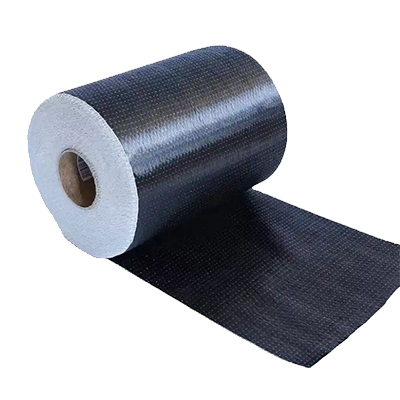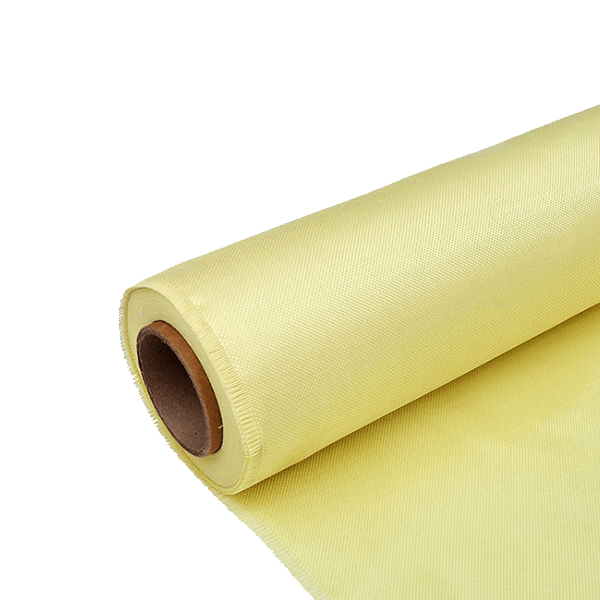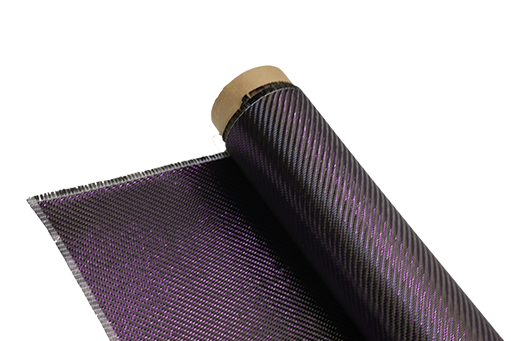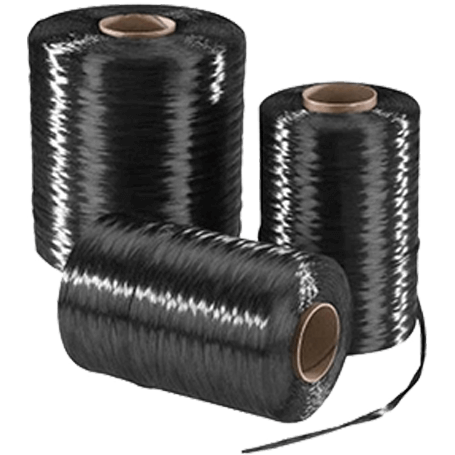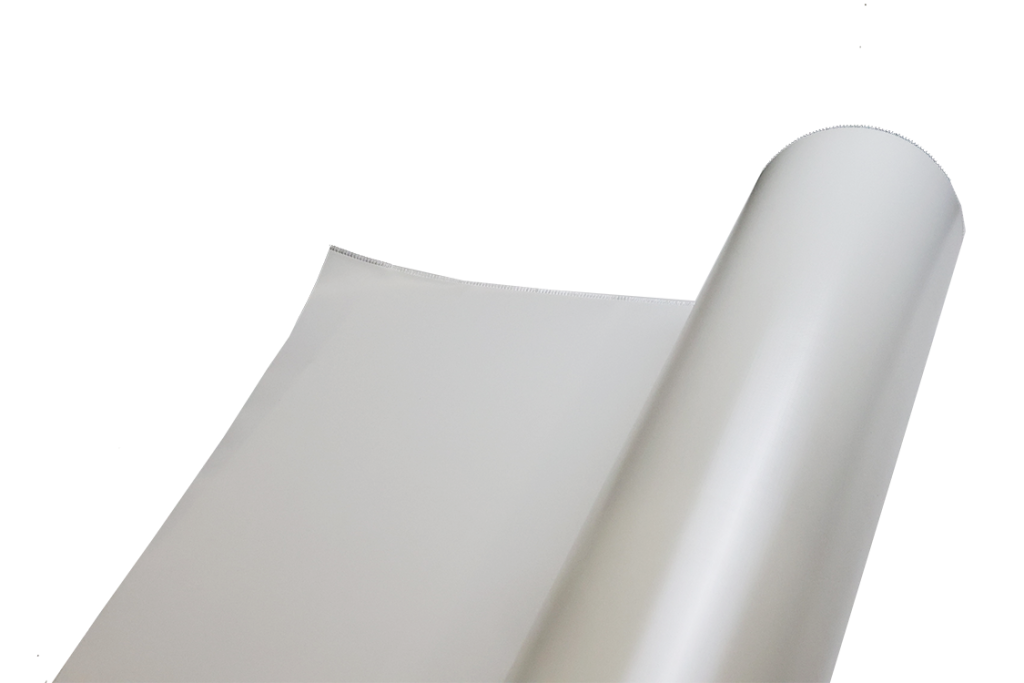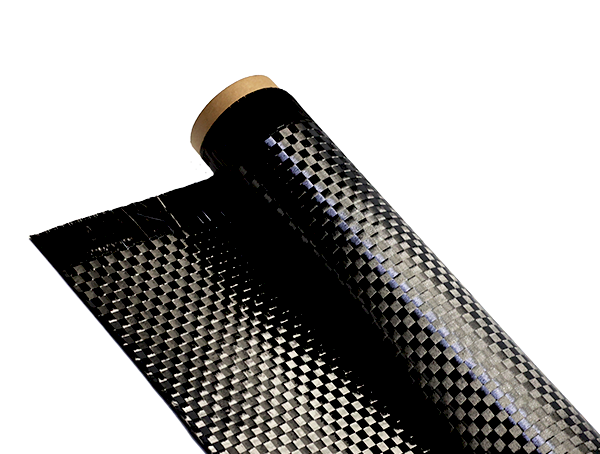Химия, лежащая в основе адгезии эпоксидной смолы к волокнистым подложкам
-
Оглавление
«Раскрытие силы: наука о адгезии эпоксидной смолы к волокнистым подложкам».
Эпоксидные клеи широко используются в различных областях благодаря своей исключительной прочности и долговечности. Химия, лежащая в основе адгезии эпоксидных смол к волокнистым субстратам, включает в себя сложное взаимодействие химических взаимодействий, поверхностной энергии и механического сцепления. Эпоксидные смолы, обычно образующиеся в результате реакции эпихлоргидрина и бисфенола А, обладают реакционноспособными функциональными группами, способными образовывать ковалентные связи с гидроксильными и аминогруппами на поверхности волокон. Кроме того, обработка поверхности волокон, например, силановыми связующими агентами, может усилить адгезию, повышая химическую совместимость и улучшая смачивающие свойства. Понимание этих химических механизмов имеет решающее значение для оптимизации адгезионных свойств композитных материалов, обеспечивая надежное и долговечное соединение в различных промышленных приложениях.
Молекулярные взаимодействия при эпоксидной адгезии
Адгезия эпоксидных смол к волокнистым субстратам — сложный процесс, зависящий от различных молекулярных взаимодействий. Понимание этих взаимодействий критически важно для оптимизации адгезионных свойств в различных областях применения — от аэрокосмической до автомобильной промышленности. В основе этого процесса адгезии лежит взаимодействие между химической структурой эпоксидной смолы и характеристиками поверхности волокнистых субстратов, которые могут включать стеклянные, углеродные или арамидные волокна.
Эпоксидные смолы – это термореактивные полимеры, характеризующиеся высокой реакционной способностью эпоксидных групп, способных образовывать ковалентные связи с различными субстратами. При нанесении эпоксидной смолы на волокнистую основу первым этапом является смачивание поверхности волокна. На смачивание влияет поверхностная энергия волокна, которая определяет, насколько хорошо эпоксидная смола может растекаться и проникать в поверхность. Более высокая поверхностная энергия обычно способствует лучшему смачиванию, что приводит к улучшению адгезии. И наоборот, низкая поверхностная энергия может препятствовать образованию прочной связи, что требует специальной обработки или модификации поверхности для улучшения адгезии.
После того, как эпоксидная смола достаточно смочит поверхность волокна, наступает следующая фаза, включающая формирование межмолекулярных взаимодействий. Эти взаимодействия можно разделить на несколько категорий, включая силы Ван-дер-Ваальса, водородные связи и ковалентные связи. Силы Ван-дер-Ваальса, хотя и относительно слабы, играют важную роль в начальном процессе адгезии. Они возникают из-за кратковременных диполей, возникающих между молекулами, что обеспечивает определённую степень притяжения даже в неполярных средах. В случае эпоксидных смол наличие полярных функциональных групп может усиливать эти взаимодействия, способствуя лучшей адгезии к полярным поверхностям волокон.
Водородные связи – ещё один важный фактор в механизме адгезии. Эпоксидные смолы часто содержат гидроксильные или аминогруппы, способные образовывать водородные связи с функциональными группами на поверхности волокна. Например, стекловолокно, состоящее в основном из диоксида кремния, может взаимодействовать с гидроксильными группами эпоксидной смолы, что приводит к усилению адгезии за счёт образования водородных связей. Это взаимодействие не только повышает механическую прочность соединения, но и увеличивает общую долговечность клеевого соединения.
Ковалентная связь представляет собой самую прочную форму адгезии и особенно важна для эпоксидных смол. Реакционноспособные эпоксидные группы смолы могут вступать в реакции раскрытия цикла при контакте с нуклеофильными центрами на поверхности волокна. Эта реакция приводит к образованию ковалентных связей, которые значительно прочнее ван-дер-ваальсовых или водородных связей. Степень ковалентной связи зависит от таких факторов, как химический состав волокна и условия отверждения эпоксидной смолы. Например, наличие аминогрупп в углеродных волокнах может способствовать более выраженному ковалентному взаимодействию с эпоксидной смолой, что приводит к усилению адгезии.
Помимо молекулярных взаимодействий, важную роль в адгезии играет механическое сцепление эпоксидной смолы с поверхностью волокна. Шероховатость поверхности волокна может увеличить площадь контакта с эпоксидной смолой, что способствует лучшему механическому сцеплению и, следовательно, повышению адгезии. Этот аспект подчёркивает важность методов подготовки поверхности, таких как шлифование или химическое травление, которые могут повысить шероховатость поверхности и способствовать более прочному адгезионному сцеплению.
В заключение следует отметить, что химия, лежащая в основе адгезии эпоксидной смолы к волокнистым субстратам, представляет собой многогранное взаимодействие молекулярных взаимодействий, включая силы Ван-дер-Ваальса, водородные и ковалентные связи. Понимая эти взаимодействия, исследователи и инженеры могут разрабатывать более эффективные адгезионные системы, адаптированные к конкретным условиям применения, что в конечном итоге приводит к повышению эксплуатационных характеристик и надежности композитных материалов.
Поверхностная энергия и ее роль в образовании связей
Адгезия эпоксидных смол к волокнистым основам — сложный процесс, на который существенное влияние оказывает поверхностная энергия материалов. Поверхностная энергия, фундаментальное свойство материалов, играет решающую роль в определении прочности сцепления двух поверхностей. В контексте эпоксидных клеев понимание поверхностной энергии необходимо для оптимизации адгезии к различным волокнистым основам, таким как стеклянные, углеродные и арамидные волокна.
Прежде всего, поверхностную энергию можно определить как избыточную энергию на поверхности материала по сравнению с его объёмом. Эта энергия возникает в результате разрыва межмолекулярных связей, возникающих при формировании поверхности. Материалы с высокой поверхностной энергией, такие как металлы и керамика, как правило, обладают сильными межмолекулярными силами, что способствует лучшей адгезии. Напротив, материалы с низкой поверхностной энергией, такие как некоторые виды пластика и резины, демонстрируют более слабые межмолекулярные силы, что затрудняет достижение эффективного сцепления. Поэтому для обеспечения оптимальной адгезии необходимо учитывать поверхностную энергию как эпоксидной смолы, так и волокнистой основы.
При нанесении эпоксидной смолы на волокнистую подложку взаимодействие между двумя материалами определяется несколькими факторами, включая смачиваемость поверхности. Смачиваемость – это способность жидкости поддерживать контакт с твёрдой поверхностью, которая зависит от поверхностной энергии как жидкости, так и твёрдого тела. Подложка с высокой поверхностной энергией обычно позволяет эпоксидной смоле эффективно растекаться и смачивать поверхность, создавая большую площадь контакта для склеивания. Напротив, если волокнистая подложка имеет низкую поверхностную энергию, эпоксидная смола может собираться в капли, а не растекаться, что приводит к плохой адгезии. Это явление подчёркивает важность подготовки поверхности, которая может улучшить смачиваемость и, следовательно, адгезию.
Более того, химический состав волокнистой основы также играет важную роль в адгезии. Например, стеклянные волокна, обладающие относительно высокой поверхностной энергией, как правило, хорошо связываются с эпоксидными смолами благодаря своей способности к образованию прочных межмолекулярных взаимодействий. С другой стороны, углеродные волокна, также обладающие высокой поверхностной энергией, могут представлять трудности из-за обработки поверхности и наличия замасливателей, которые могут препятствовать склеиванию. Поэтому понимание специфических характеристик волокнистой основы крайне важно для выбора подходящей рецептуры эпоксидной смолы и методов обработки поверхности.
Помимо поверхностной энергии, на адгезию может существенно влиять наличие таких загрязнений, как масла, пыль или влага. Эти загрязнения могут снижать эффективную поверхностную энергию подложки, что приводит к снижению смачиваемости и прочности соединения. Следовательно, тщательная очистка и подготовка поверхности являются критически важными этапами процесса склеивания. Для повышения поверхностной энергии и улучшения адгезии могут использоваться такие методы, как плазменная обработка, химическое травление или механическая абразивная обработка.
Кроме того, процесс отверждения эпоксидных смол также влияет на конечную прочность соединения. В процессе отверждения эпоксидная смола претерпевает химические превращения, которые могут как усилить, так и ослабить сцепление с волокнистой основой. Степень отверждения, температура и время — факторы, влияющие на конечные свойства клеевого соединения. Поэтому для достижения оптимальной адгезии необходим тщательный контроль этих параметров.
В заключение следует отметить, что взаимодействие поверхностной энергии и адгезии является важнейшим фактором при нанесении эпоксидных смол на волокнистые основы. Понимание принципов поверхностной энергии, смачиваемости и влияния загрязняющих веществ позволяет значительно улучшить адгезионные свойства эпоксидных клеев. Эти знания не только помогают в выборе подходящих материалов и способов обработки поверхности, но и повышают общую надежность и долговечность композитных конструкций в различных областях применения.
Влияние обработки поверхности волокон на прочность сцепления
Адгезия эпоксидных смол к волокнистым подложкам является критически важным фактором для эксплуатационных характеристик композитных материалов, особенно в тех случаях, когда механическая прочность и долговечность имеют первостепенное значение. Одним из наиболее важных факторов, влияющих на прочность адгезии, является обработка поверхности волокон перед нанесением эпоксидной смолы. Обработка поверхности может изменить физические и химические свойства волокон, тем самым усилив взаимодействие между эпоксидной смолой и подложкой. Это взаимодействие необходимо для достижения оптимальной адгезии, которая напрямую коррелирует с общими характеристиками композитного материала.
Прежде всего, поверхностная энергия волокна играет ключевую роль в адгезии. Волокна с низкой поверхностной энергией, как правило, отталкивают клеи, что приводит к плохому склеиванию. И наоборот, увеличение поверхностной энергии посредством различных видов обработки может значительно улучшить адгезию. Например, химическая обработка, такая как силановые связующие агенты, может ввести функциональные группы, улучшающие совместимость волокна с эпоксидной смолой. Эти функциональные группы могут образовывать ковалентные связи с эпоксидной смолой, тем самым создавая более прочный интерфейс. Кроме того, физическая обработка, такая как плазменный или коронный разряд, может увеличить шероховатость поверхности, что не только увеличивает площадь поверхности, доступную для склеивания, но и способствует механическому сцеплению между эпоксидной смолой и волокном.
Более того, тип обрабатываемого волокна также влияет на эффективность поверхностной обработки. Например, стекловолокно, углеродное волокно и арамидное волокно обладают уникальными характеристиками поверхности, которые по-разному реагируют на различные виды обработки. Стеклянные волокна, известные своей высокой прочностью на разрыв и химической стойкостью, часто улучшают адгезию с эпоксидными смолами при обработке силаном. С другой стороны, углеродные волокна, ценимые за свою лёгкость и высокую прочность, могут потребовать более специализированной обработки для решения проблемы их изначально низкой поверхностной энергии. В этом контексте выбор обработки должен быть адаптирован к конкретному типу волокна для максимального повышения адгезионной прочности.
Помимо химической и физической обработки, на адгезию могут влиять условия окружающей среды во время отверждения эпоксидной смолы. Такие факторы, как температура, влажность и время отверждения, могут влиять на степень взаимодействия эпоксидной смолы с обработанной поверхностью волокна. Например, более высокие температуры могут ускорить процесс отверждения, что может привести к неполному склеиванию, если поверхность волокна не подготовлена должным образом. Поэтому для достижения желаемой прочности адгезии крайне важно оптимизировать как обработку поверхности, так и условия отверждения.
Кроме того, старение обработанных волокон также может со временем влиять на адгезию. Поскольку волокна подвергаются воздействию таких факторов окружающей среды, как влажность и колебания температуры, эффективность поверхностной обработки может снижаться, что приводит к снижению адгезионной прочности. Это явление подчёркивает важность понимания долгосрочных характеристик обработанных волокон в реальных условиях. Для поддержания оптимальной адгезии в композитных материалах, эксплуатируемых в суровых условиях, могут потребоваться регулярные проверки и, возможно, повторная обработка.
В заключение следует отметить, что влияние обработки поверхности волокон на прочность адгезии – многогранный вопрос, охватывающий химические, физические и экологические факторы. Тщательно выбирая и применяя соответствующие методы обработки поверхности, производители могут значительно улучшить адгезию эпоксидных смол к волокнистым подложкам, тем самым повышая эксплуатационные характеристики и долговечность композитных материалов. По мере развития исследований в этой области более глубокое понимание лежащих в их основе химических процессов, несомненно, приведёт к разработке более эффективных стратегий оптимизации адгезии в различных областях применения.
Вопросы и ответы
1. **Вопрос:** Каков основной механизм сцепления эпоксидной смолы с волокнистыми основаниями?
**Ответ:** Основной механизм адгезии заключается в механическом сцеплении и химическом связывании, когда эпоксидная смола проникает в неровности поверхности волокнистой подложки и образует ковалентные связи с функциональными группами, присутствующими на поверхности волокна.
2. **Вопрос:** Каким образом обработка поверхности волокнистых субстратов улучшает адгезию эпоксидной смолы?
**Ответ:** Поверхностная обработка, такая как плазменная обработка или химическое травление, увеличивает поверхностную энергию и вводит реакционноспособные функциональные группы, которые улучшают смачиваемость и способствуют более прочному химическому взаимодействию между эпоксидной смолой и волокнистой подложкой.
3. **Вопрос:** Какую роль играет процесс отверждения эпоксидной смолы в адгезии к волокнистым основаниям?
**Ответ:** Процесс отверждения эпоксидной смолы включает реакции сшивания, которые улучшают механические свойства и стабильность клеевого соединения, обеспечивая лучшую передачу нагрузки и устойчивость к факторам окружающей среды, в конечном итоге улучшая адгезию к волокнистым субстратам. Химия, лежащая в основе адгезии эпоксидной смолы к волокнистым субстратам, включает образование прочных ковалентных связей и физическое взаимодействие между эпоксидной смолой и поверхностью волокна. Ключевые факторы, влияющие на адгезию, включают химическую совместимость эпоксидной смолы с материалом волокна, шероховатость поверхности и наличие функциональных групп, способствующих склеиванию. Процесс отверждения эпоксидной смолы также играет важную роль, поскольку он влияет на плотность сшивки и механические свойства клеевого соединения. В целом, понимание этих химических взаимодействий необходимо для оптимизации рецептур эпоксидных смол и повышения адгезионных характеристик в композитных материалах.

